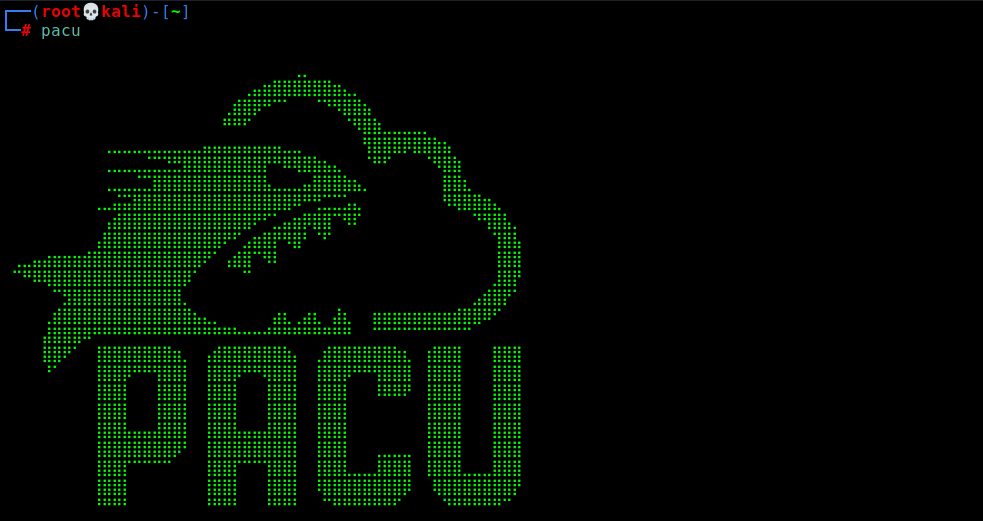Offensive Security Tool: Pacu – The Amazon Web Services Exploitation Framework

Reading Time: 3 Minutes
Offensive Security Tool: Pacu – The Amazon Web Services Exploitation Framework
Pacu
Pacu is an open source AWS exploitation framework, designed for offensive security testing against cloud environments. Created and maintained by Rhino Security Labs, Pacu allows penetration testers to exploit configuration flaws within an AWS account, using modules to easily expand its functionality. Current modules enable a range of attacks, including user privilege escalation, backdooring of IAM users, attacking vulnerable Lambda functions, and much more.
Installation
Pacu is a fairly lightweight program, as it requires only Python3.5+ and pip3 to install a handful of Python libraries. Running install.sh will check your Python version and ensure all Python packages are up to date.
Quick Installation
> git clone https://github.com/RhinoSecurityLabs/pacu
> cd pacu
> bash install.sh
> python3 pacu.py
For a more detailed and user-friendly set of user instructions, please check out the Wiki’s installation guide.
See Also: Google PPC Ads Used to Deliver Infostealers
Pacu’s Modular Power
Pacu uses a range of plug-in modules to assist an attacker in enumeration, privilege escalation, data exfiltration, service exploitation, and log manipulation within AWS environments. At present, Pacu has 36 modules for executing AWS attacks, but they’ll be working hard to add more modules in the future.
In order to keep pace with ongoing AWS product developments, they’ve designed Pacu from the ground up with extensibility in mind. A common syntax and data structure keeps modules easy to build and expand on – no need to specify AWS regions or make redundant permission checks between modules. A local SQLite database is used to manage and manipulate retrieved data, minimizing API calls (and associated logs). Reporting and attack auditing is also built into the framework; Pacu assists the documentation process through command logging and exporting, helping build a timeline for the testing process.
They’ll be working on improve Pacu’s core capabilities and building out a well-documented ecosystem so that cybersecurity researchers and developers can make new modules quickly and easily.
Pacu Framework Development Goals
⦿ Improve interface formatting
⦿ Database forward-migrations and version tracking
⦿ “Attack Playbooks” to allow for easier use of complex module execution chains
⦿ Colored console output
⦿ Module Dry-Run functionality
⦿ Allow use of standalone config files
⦿ Plugin architecture improvements
Notes
⦿ Pacu is officially supported in OSX and Linux.
⦿ Pacu is Open-Source Software, and is distributed with a BSD-3-Clause License.
See Also: Jeff Moss, aka Dark Tangent, the person who founded DEF CON and Black Hat
Getting Started
The first time Pacu is launched, you will be prompted to start and name a new session. This session will be used to store AWS key pairs, as well as any data obtained from running various modules. You can have any number of different sessions in Pacu, each with their own sets of AWS keys and data, and resume a session at any time (though a restart is currently required to switch between sessions).
Modules require an AWS key, which grant you minimal access to an AWS environment and are comprised of an access key ID and a secret access key. To set your session’s keys, use the set_keys command, and then follow the prompts to supply a key alias (nickname for reference), an AWS access key ID, an AWS secret access key, and an AWS session token (if you are using one).
If you are ever stuck, help will bring up a list of commands that are available.
Basic Commands in Pacu
⦿ list will list the available modules for the regions that were set in the current session.
⦿ help module_name will return the applicable help information for the specified module.
⦿ run module_name will run the specified module with its default parameters.
⦿ run module_name --regions eu-west-1,us-west-1 will run the specified module against the eu-west-1 and us-west-1 regions (for modules that support the –regions argument)
Wiki
For walkthroughs and full documentation, please visit the Pacu wiki.
Disclaimers, and the AWS Acceptable Use Policy
- To the best of their knowledge Pacu’s capabilities are compliant with the AWS Acceptable Use Policy, but as a flexible and modular tool they cannot guarantee this will be true in every situation. It is entirely your responsibility to ensure that how you use Pacu is compliant with the AWS Acceptable Use Policy.
- Depending on what AWS services you use and what your planned testing entails, you may need to request authorization from Amazon prior to actually running Pacu against your infrastructure. Determining whether or not such authorization is necessary is your responsibility.
- As with any penetration testing tool, it is your responsibility to get proper authorization before using Pacu outside of your own environment.
- Pacu is software that comes with absolutely no warranties whatsoever. By using Pacu, you take full responsibility for any and all outcomes that result.











